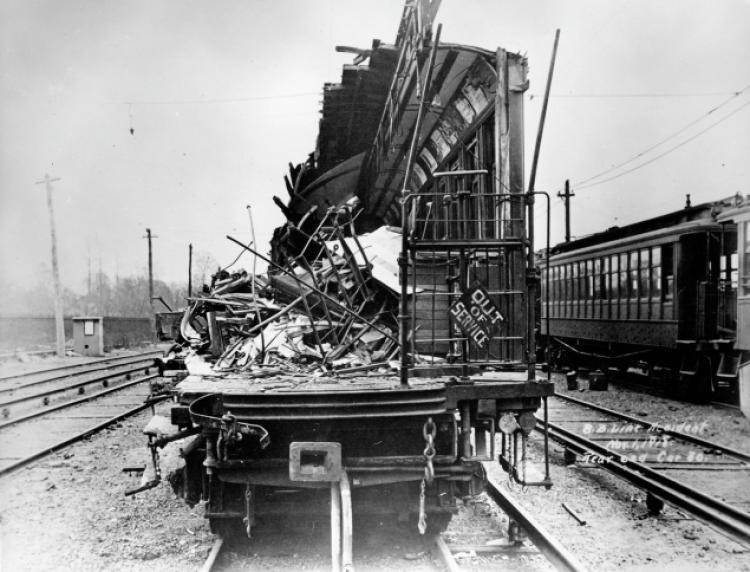Why does the dog wag
its tail?
Because a dog is smarter than its tail.
If the tail were smarter, it would wag the dog.
Four recent columns in the Pajaronian by Trina Coffman-Gomez, Watsonville City Council member and the newest Commissioner of the Santa Cruz County Regional Transportation Commission (RTC), demonstrate a quick learning curve. It is the outcome of a crash course provided by the RTC staff.

The RTC was established by the state in 1972 as an autonomous agency. It has increased that autonomy by successfully passing Measure D. The Measure D half percent sales tax goes exclusively to RTC funding, about $17,000,000 annually, or more precisely a cost to you of $50 if you purchase a $10,000 car in Santa Cruz County.
Let’s examine some of the dog wagging by the RTC staff, as expressed through Ms Coffman-Gomez’s columns.
She writes: “The contract with Progressive Rail prohibits tank car storage without approval from the RTC”. In fact, the contract specifically states, several times, “…the Commission may not materially interfere with Railway’s Freight Service rights and obligations under federal law, or rights under the Freight Easement, unless first approved by the STB.” “STB” is the federal Surface Transportation Board; the quoted segment is from 2.3. of the Operating Agreement.
She writes: “The corridor has the capacity and the width to safely handle passenger rail, pedestrians and cyclist.” The rail right of way varies from 18 feet to 160 feet and much of its landscape has naturalized and closed in on the rail. The RTC notes that 25 feet is the absolute minimum, but imagine how cozy that would be. Baby carriages, bikes and trains, oh my! Additionally, a physical barrier will be required between train and pedestrians, effectively turning the right of way into a fence.
She writes: “The cost of not having a train is many times higher”… than the existing transportation conditions. Most non-invested state and regional financial planners would disagree. When the Santa Cruz County 270,000 population and 31 miles of track and the $11 million grant from the state were described, the informed advice was: give the money back. The RTC staff asserting to a Commissioner the fiscal cost-to-benefit of rail is silliness, not even justified by their Unified Corridor Study: “7,000 passenger trips on a typical weekday in the horizon year of the Unified Corridor Study (2035)” and a cost of $330,410,000. In contrast, the UCS forecasts 22,518 bike and walk trips in 2035 in a trail only scenario, a 3 to 1 passenger trip advantage for walking and biking over rail transit. These are figures from the Study, but are not reflected in the programmatically directed “Scenarios”.
She writes: ”For example, the county share by population based off of the 2018 Caltrans State Rail Plan, is close to $1 billion. This is where our contribution remains to be used, which will be spent by other communities if we don’t apply for these funds.” We can apply all we want, but the second smallest county in California, population 270,000 to 40,000,000 statewide, is disadvantaged in an arena governed by politics rather than “shares”. The backbone of the State Rail Plan is High Speed Rail, upon which rail funding will focus. The Caltrans 2027 vision map shows bus service from Watsonville to Santa Cruz continuing to San Jose; by 2040 they show our state linked by High Speed Rail from Sacramento to San Diego and Santa Cruz and Watsonville have regional rail service running at less than hourly frequency. This is the brightest scenario the State Rail Plan offers our area.
She writes: “The city of Watsonville has a (population) density of 8,400 per mile… Other communities with this density have shown us that rail is an affordable option.” The success of rail transit depends on the rider’s ultimate destination and the densities along the route and at the destinations, such as employment density. Those conditions don’t exist in Santa Cruz County. Instead, looking at Watsonville’s population density and ranking as one of the least safe biking and walking community in California, one might consider other options. More open space, a linear park, protected and safe walking and biking areas, free healthy family recreation.
What will happen instead is the return of the tank cars. Saint Paul and Pacific (SPP), Progressive’s local operating name, has published its tariffs. The only charges recorded are “storage hold charges” amounting to $15.00 per car per day for non-hazardous cars and $20.00 per day for hazardous cars. At the 5% franchise fee the RTC proposes, this would be $1.00 per car or $300 per day for 300 hazardous cars or $109,500 per annum. In its third attempt to run a railroad, the RTC continues to demonstrate pathetic business acumen. It is appropriate and reflective to its skill in managing transportation.
The RTC staff is focused on “growing the program”, on the survival and expansion of the agency. These are their metrics of success. Meanwhile, it can be argued that no other county in the United States with similar tax base and population has worst roads and transportation. Even in the face of repeated failure, the elected Commissioners have absorbed the staff’s point of view, as reflected in Ms Coffman-Gomez’s columns.
The tail is wagging the dog.
###
Originally published in the Watsonville Register-Pajaronian, January 5, 2019.
